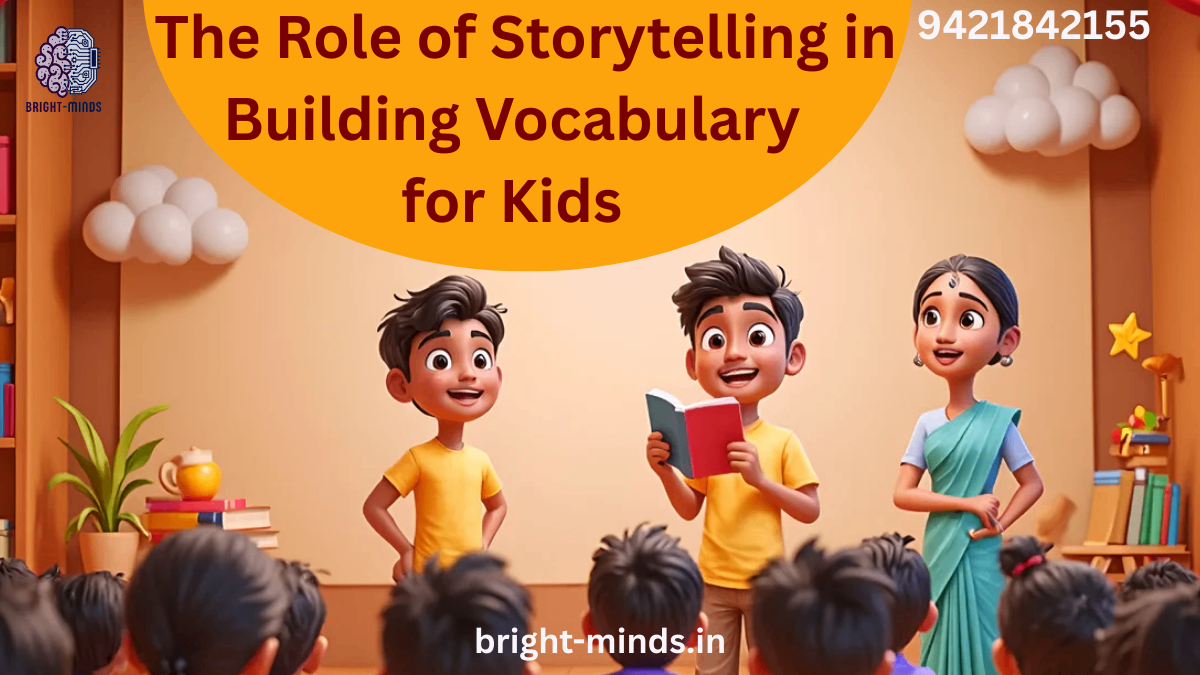Have you ever noticed how kids remember the wildest details from their favorite stories? Maybe it’s the name of a dragon, a faraway kingdom, or a talking dog’s hilarious one-liner. That’s the power of storytelling—and it goes far beyond fun. In fact, storytelling is one of the most effective tools for building vocabulary in children.
In a world where communication skills are more valuable than ever, giving kids a strong vocabulary foundation early on isn’t just helpful—it’s essential. Whether you’re a parent, educator, or work in the EdTech space, understanding the role of storytelling can help you unlock a child’s full language potential—and set them on a path to long-term success.
Why Vocabulary Matters More Than You Think
Vocabulary is more than just knowing big words—it’s the foundation of reading comprehension, critical thinking, and effective communication. Kids with stronger vocabularies tend to:
- Perform better in school across all subjects
- Express emotions and ideas more clearly
- Solve problems more efficiently
- Develop greater confidence in social situations
And it all starts early. According to studies, a child’s vocabulary in kindergarten can predict their academic performance in later years, including high school graduation and even career success.
Storytelling: The Vocabulary-Building Superpower
So, how exactly does storytelling help?
Storytelling activates the imagination, introduces new words in context, and makes learning deeply personal. When children hear or read stories, they’re not just absorbing vocabulary—they’re seeing it in action.
✅ Key Benefits of Storytelling for Vocabulary:
- Contextual Learning: Words are easier to understand and remember when they appear in a meaningful narrative.
- Repetition in Disguise: Recurring characters, phrases, or themes reinforce new words naturally.
- Emotional Connection: Kids remember words better when they’re tied to emotions, humor, or suspense.
- Interactive Learning: Storytime often involves discussion, questions, and imaginative play—perfect environments for language growth.
🧠 Real-World Example:
Let’s say you tell a story about a pirate searching for “treasure.” Along the way, the story introduces words like “map,” “compass,” “island,” and “adventure.” Without realizing it, your child just learned multiple new vocabulary words—all while being entertained.
Now imagine doing that every night for a year. The vocabulary gains are massive.
📊 Market Trends: Storytelling in Modern Learning
The education market has seen a huge shift toward storytelling-based learning—especially in early childhood development. More schools and platforms are integrating narrative-based learning into reading, science, and even math lessons.
🔍 Industry Insight:
- EdTech platforms are combining AI with storytelling to personalize vocabulary development.
- Audiobooks and interactive eBooks are seeing a surge in popularity—especially for kids aged 3 to 8.
- Companies focusing on early literacy now emphasize “narrative-rich environments” as a key growth strategy.
This growing focus on storytelling aligns with what researchers already know: children learn best through meaningful, engaging interactions.
💡 Practical Tips: How to Use Storytelling to Boost Vocabulary
Whether you’re a parent at home or a company employee supporting educational tools, here are actionable ways to use storytelling for language development:
1. Read Aloud Daily
Make reading a ritual. Choose books with rich vocabulary, vivid imagery, and repetition. Pause to explain new words in context.
Tip: Use voices and expressions to bring the story to life—this boosts retention.
2. Ask “What If?” Questions
After the story, ask questions like, “What if the princess didn’t open the door?” or “Why do you think the fox was clever?” This encourages critical thinking and vocabulary use.
3. Tell Stories Together
Invite your child to help you create a story. Prompt them with starter sentences, then build on their ideas. This strengthens vocabulary and creativity.
4. Use Story-Based Learning Apps
Explore digital tools that integrate storytelling into language learning. Many platforms offer narrated stories with built-in vocabulary games.
5. Make Storytime Multisensory
Add props, drawings, or even songs to your storytelling routine. The more senses involved, the more memorable the words become.
🌱 Long-Term Impact: From Storybooks to Success
Vocabulary built through storytelling doesn’t just help with school—it prepares kids for life. Communication is the heart of every career, every relationship, and every opportunity.
When a child can understand and express themselves clearly, they’re more likely to:
- Succeed academically
- Build stronger relationships
- Think critically and solve problems
- Navigate the world with confidence
And it all begins with something as simple and joyful as sharing stories.
you may be interested in this blog here:-
Unlocking the Magic of Phonics: The Power of Phonics Songs for Kids

